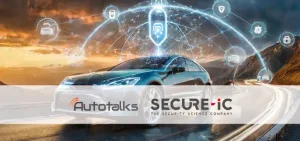By Sagit Rogenstein Adler
Exploring the evolution and hurdles of V2X (Vehicle-to-Everything) communication is a fascinating journey that offers valuable insights into the challenges of establishing a new market based on a clear significant need – safer roads. V2X suffered delays despite the promise to reshape the landscape of transportation and road safety.
The Early Days of V2X: Vehicle-to-Everything communication, otherwise referred to as V2X, set out to create smarter, safer roadways. The technology primarily focuses on enabling vehicles to communicate with each other and with infrastructure, sharing basic information like the vehicle’s location, speed and trajectory.
V2X was initially based on the DSRC (Dedicated Short-Range Communication) protocol, operating in the 5.9 GHz frequency band. In the 1990’s the FCC allocated 75 MHz of spectrum for the use of Intelligent Transportation System (ITS). A portion of this spectrum is still allocated today for V2X applications.
Enabling the V2X technology: As early as 2008, pioneer semiconductor company, Autotalks, began designing the first dedicated V2X chipset. Several years later, the first-generation chipset was finalized, heralding the commencement of an extensive phase of industry field tests. The technology garnered significant interest during this testing period, ultimately culminating in its approval and widespread deployment.
V2X regulation: In December 2016, the U.S. Department of Transportation (DOT) proposed a rule that would require all new light-duty vehicles to be equipped with DSRC technology. The proposed mandate aimed to establish a communication standard for V2X communication. The proposed mandate lost momentum following the change in leadership to the Trump administration.
In Europe, the European Commission has been actively promoting V2X for over a decade. The Intelligent Transport Systems (ITS) Directive was adopted in 2010, and the C-Roads platform, which incorporates V2X technology, was launched in 2016.
In 2017, the cellular ecosystem got involved in the V2X market and created a competing protocol call C-V2X. C-V2X enables communication among vehicle, infrastructure, and the network directly and over cellular networks, using both 4G LTE and 5G technologies. This later led to the inception of hybrid communication, which combined direct and cellular.
Integration with Traffic Infrastructure: At the earlier stages, V2X allowed basic, yet useful applications with traffic infrastructure. Traffic signal optimization, adaptive traffic management, and prioritizing emergency vehicles are just some of the applications that contributed to more efficient traffic flow. The AI evolution helped to introduce smart intersections which used camera to detect all road users in the intersection, and using V2X add those to the safety network in order to enhance the safety benefit of the early-day adoption of the technology.
The beginning of widespread V2X deployment: Automakers globally started integrating V2X technologies into their vehicles. Volkswagen is responsible for giving V2X a big push forward, equipping its Volkswagen Golf and entire EV lineup with V2X. Cadillac was the first to launch V2X in the US.
V2X Today: In the contemporary automotive landscape, many OEMs are developing solutions for future inclusion of V2X technology. From 2023, EuroNCAP grants up to 10 safety assist points for vehicles implementing Local Hazard Warning using V2X, giving the technology another push forward.
Next Generation of V2X: V2X 2, the new generation of V2X technology, offers advanced safety features such as cooperative perception, allowing V2X equipped vehicles share information about non-V2X- equipped cars, with nearby vehicles. V2X 2 also supports 5G V2X and works with the vehicle’s ADAS to enable automatic braking. V2X 2 will take road safety another giant leap forward and truly offers a new era of safer roads.
Conclusion: The journey of V2X technology from its inception to the present day reflects a remarkable resiliency and dedication in the pursuit of safer, more connected transportation systems. The delay in the V2X market prevents avoiding many accidents that could have been prevented. The cost to society is too high to bear. That motivates Autotalks to stay committed to promote V2X to shape the future of mobility. The collaborative and persistent efforts of industry stakeholders ensure that its impact will only grow in significance, promising a safer and more interconnected transportation landscape for years to come.






